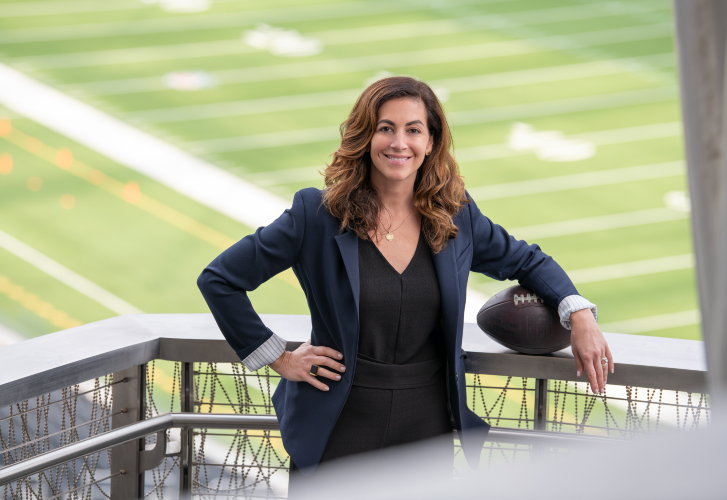
If it weren’t challenging enough to coordinate the event at a brand-new facility, SoFi Stadium in Inglewood, Keenan must also do so during a second year in which Covid-19 protocols have become an integral aspect of operational logistics. Moreover, she’s managing all of this on an accelerated timeline; most Super Bowls are planned over the course of years, but SoFi Stadium has only been open since September 2020.
Keenan has approached her responsibilities as a matter of scaling up, looking at how a site operates during a regular season game or a concert and adapting that to the expanded needs of the Super Bowl. For example, she indicated that for a normal game, they might have to coordinate access for eight broadcast trucks, from accreditation to technical support; for the Super Bowl, it’s 50 to 100.
New playing field
New playing field
Complicating matters further is the fact that Keenan’s event operations team and SoFi Stadium’s in-house crew are still learning the facility’s idiosyncrasies.
“This stadium, being new and not having fans last season, has put us in a place where we’re still learning a lot as the stadium continues to operate and have events,” she said.
The facility only hosted its first major event with spectators, “Vax Live: The Concert to Reunite the World,” in May, after the pandemic forced cancellations of a series of 2020 concert dates scheduled by artists like Taylor Swift and Guns N’ Roses. Prior to that, even the Los Angeles Rams and Los Angeles Chargers, the two teams that call SoFi Stadium home, practiced and played their 2020-2021 seasons “behind closed doors,” the league’s term for games played without fans.
Describing the Super Bowl planning process as one that typically takes two or more years to execute, Keenan said that the absence of this shared “muscle memory” among the teams she coordinates requires everyone who’s putting together the Big Game to adapt to a steep learning curve.
“I would bet that any stadium operator would say that the first year or two of a building opening is the most challenging,” she said. “You can be as good as anyone in planning and designing — and the stadium is very well designed — but you never really know how it’s going to work until it starts to come alive.”
Gearing up for game time
Gearing up for game time
Perhaps the biggest piece of the puzzle Keenan must put together is the network of partnerships the NFL builds with local businesses to help produce the Super Bowl, from signage and catering to portable restrooms and local transportation. The league has to finalize contracts months ahead of game time, as well as distribute and coordinate credentials, security access and logistical information depending on what products or services are being provided. Keenan indicated that the NFL credentials more than 20,000 people to support the Super Bowl, a significant number of whom come from local communities.
One advantage she and her team get to enjoy is the stadium’s proximity to the league’s West Coast headquarters, which opened in September in the same Inglewood-based entertainment complex, Hollywood Park, that SoFi Stadium calls home.
“It certainly is convenient for me to be able to pop over there, especially in a year where we’re still learning,” she said.
There’s still a lot of ground to cover before game day in February. Keenan said this year’s Super Bowl campus — including space for all support staff and services aside from the stadium’s staff — takes up almost 2 million square feet of space. It’s a “massive group effort,” she added, to produce the six-hour event, even if many aspects of it are business as usual for her team.
“It’s obviously bigger, and there’s more stuff, but stadium operations at an NFL game, that’s ultimately what the Super Bowl is,” she said. “You layer in a concert and whole bunch of hospitality and all these other media elements, but at the end of the day, it is a football game, and we’ve all really worked hard and have a ton of support locally to make this a smooth operation on Super Bowl Sunday.”
